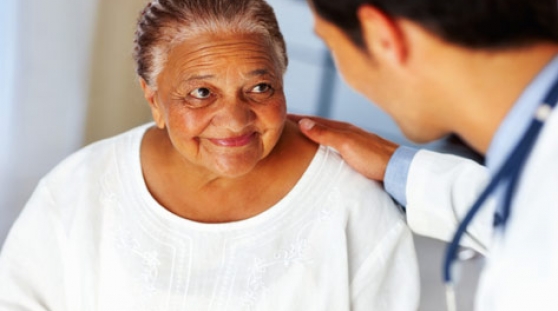Osteoarthritis Health Center
Table of Contents

The main symptoms of osteoarthritis include the following:
- Stiffness in a joint after being inactive for a long period of time, like after getting out of bed
- Swelling in one or more joints
- Crunching sensation or the sound of bone rubbing on bone
Not all joint pain is the result of osteoarthritis. You might not have osteoarthritis if you feel hot, your skin turns red or your joint pain is accompanied by other symptoms like a rash or fever. If you are experiencing joint pain, see your doctor to find out if it is osteoarthritis or the result of another condition, such as rheumatoid arthritis.
About one third of people who show X-ray evidence of osteoarthritis report pain or other symptoms. Typically, the pain gets worse with activity and lessens with rest. However, exercise can significantly improve osteoarthritis. If you have osteoarthritis, work with a doctor and/or physical therapist to figure out which exercises will benefit you the most and which should be avoided.
Although osteoarthritis can affect any joint, it most often occurs in the hands, knees, hips and spine.
Hands
Osteoarthritis in the hands can run in families. That is, people with a parent or grandparent with hand osteoarthritis have an increased risk of developing the same condition. Women are more likely than men to have arthritis that affects the hands, and for most women, the condition tends to develop after menopause.
People with osteoarthritis of the hands may develop Heberden's nodes and/or Boiuchard's nodes. Heberden's nodes are small, bony knobs on the joints closest to the fingernails, and Bouchard's nodes are similar knobs on the middle joints of the fingers. With hand osteoarthritis, the fingers can become enlarged and gnarled. They may also ache and feel stiff and numb.
Knees
In people with osteoarthritis, the knee is one of the most commonly affected joints. Patients with knee osteoarthritis may experience symptoms such as stiffness, swelling and pain. These symptoms can make it difficult to walk, climb and stand up or sit down.
Hips
The hips are also commonly affected by osteoarthritis. The symptoms of hip osteoarthritis are similar to those of knee osteoarthritis — pain and stiffness of the joint itself. But sometimes, patients with hip osteoarthritis feel pain in the groin, inner thigh, buttocks or even the knees. Hip osteoarthritis may limit moving and bending, which can make it hard to do normal daily activities like getting dressed.
Spine
When osteoarthritis affects the spine, patients may first feel stiffness and pain in the neck or lower back. In some cases, the changes to the spine caused by arthritis can put pressure on the nerves where they exit the spinal column, which can lead to weakness, tingling or numbness of the arms and legs. In severe cases, this can even impact bladder and bowel function.
